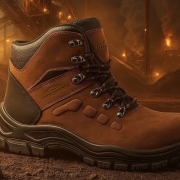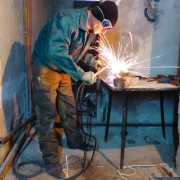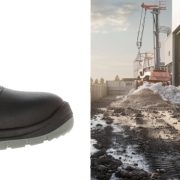Why is there such a large variance in the price of Safety Footwear?
Safety footwear is a crucial component of personal protective equipment (PPE), designed to safeguard workers’ feet from various hazards in the workplace. Despite its importance, there is a significant variance in the selling prices of safety footwear, ranging from budget-friendly options to high-end, premium products. This essay explores the various factors contributing to these price differences, including material quality, manufacturing processes, brand reputation, safety standards, and market dynamics. By examining these aspects, we aim to provide a comprehensive understanding of why safety footwear can vary so widely in cost.
Material Quality and Composition
Types of materials used
The choice of materials significantly impacts the cost of safety footwear. Key materials include:
- Leather: Full-grain leather is typically more expensive due to its durability and high-quality finish. Top-grain and split leather are less costly but also less durable.
- Synthetic Materials: Polyurethane (PU), polyvinyl chloride (PVC), and other synthetic materials can offer cost-effective alternatives. However, their longevity and comfort may vary.
- Composite Materials: High-tech materials like carbon fiber or Kevlar used in some safety footwear provide high levels of protection and can increase costs.
Cost Implications: Premium materials, such as high-quality leather or advanced composite materials, contribute to higher production costs and, consequently, higher retail prices.
Durability and Performance
The longevity of safety footwear is influenced by the quality of materials used. For instance:
- High-Durability Soles: Rubber or PU soles with enhanced resistance to chemicals and abrasion cost more but provide longer-lasting protection.
- Comfort Features: High-quality insoles, shock-absorbent midsoles, and ergonomic designs improve comfort but can increase the price.
Cost Implications: Footwear designed to withstand extreme conditions or provide superior comfort often commands a higher price due to the additional investment in materials and technology.
Manufacturing Processes and Technologies
Production Techiques
The methods used in manufacturing safety footwear can affect its cost:
- Injection Molding: Used for creating soles and other components, this process can be more efficient but may involve higher initial setup costs.
- Handcrafting: Premium safety boots often involve extensive handcrafting, which is labor-intensive and increases production costs.
Cost Implications: Advanced manufacturing techniques or handcrafted elements contribute to higher production costs, which are reflected in the retail price.
Quality Control and Testing
Safety footwear undergoes rigorous quality control and testing to meet safety standards. These include:
- Impact and Compression Tests: Ensuring toe caps can withstand significant force.
- Slip Resistance Tests: Evaluating the outsole’s performance on various surfaces.
Cost Implications: Comprehensive testing and adherence to safety standards require additional resources, adding to the overall cost of the footwear.
Brand Reputation and Market Positioning
Brand Influence
Brand reputation plays a significant role in pricing. Established brands with a reputation for quality and reliability can command higher prices due to:
- Brand Equity: Consumers are often willing to pay a premium for brands known for their durability and performance.
- Customer Loyalty: Strong brand loyalty can drive up prices as customers perceive higher value in recognized brands.
Cost Implications: Brands with strong market presence and reputation often have higher prices, reflecting the perceived value and trust associated with their products.
Market Positioning
Companies position their products differently based on target markets:
- Premium Positioning: Brands targeting high-end markets may price their products higher due to superior materials, advanced technologies, and exclusive designs.
- Value Positioning: Brands focusing on cost-effectiveness may use more affordable materials and manufacturing processes to offer competitive pricing.
Cost Implications: Market positioning strategies affect pricing structures, with premium brands commanding higher prices due to perceived added value and exclusivity.
Safety Standards and Compliance
Regulatory Requirements
Safety footwear must comply with various safety standards, which can influence pricing:
- International Standards: Compliance with standards such as ASTM (American Society for Testing and Materials), ISO (International Organization for Standardization), and EN (European Norms) requires rigorous testing and certification.
- Industry-Specific Standards: Different industries may have specific requirements, adding to the cost of ensuring compliance.
Cost Implications: Meeting and maintaining compliance with stringent safety standards involves additional costs, including testing, certification, and quality assurance, which are reflected in the product’s price.
Additional Safety Features
Footwear with enhanced safety features, such as:
- Metatarsal Protection: Additional protection for the upper foot.
- Electrical Hazard Protection: Insulation against electrical shocks.
Cost Implications: Incorporating advanced safety features requires specialized materials and technologies, increasing the overall cost of the footwear.
Supply Chain and Distribution Costs
Supply Chain Dynamics
The cost of safety footwear is influenced by various supply chain factors:
- Raw Material Costs: Fluctuations in the prices of raw materials like leather and synthetic components can impact the final price.
- Manufacturing Location: Production in regions with higher labor costs or stricter regulations can lead to higher prices.
Cost Implications: Variations in raw material costs and manufacturing locations affect the overall production cost, which is passed on to consumers.
Distribution and Logistics
Distribution and logistics play a crucial role in determining the final price:
- Shipping Costs: Transporting footwear from the manufacturer to retailers or consumers can add to the cost, especially for international shipments.
Cost Implications: Distribution and logistics expenses contribute to the final retail price of safety footwear, particularly when dealing with international or specialty products.
Consumer Preferences and Market Demand
Consumer Preferences
Consumer preferences impact pricing based on:
- Design and Aesthetics: Footwear with fashionable designs or customizable features may command higher prices.
- Brand Perception: Consumers may be willing to pay more for brands perceived as high-quality or prestigious.
Cost Implications: Catering to specific consumer preferences can result in higher production costs, which are reflected in the price.
Market Demand
The level of market demand influences pricing strategies:
- High Demand: Products in high demand may see price increases due to perceived value and limited availability.
- Market Trends: Trends towards eco-friendly or technologically advanced footwear can drive up prices as companies invest in new materials and technologies.
Cost Implications: Fluctuations in market demand and trends affect pricing strategies, with high-demand or trend-driven products often commanding higher prices.
Innovations and Technological Advancements
Research and Development
Investment in research and development (R&D) leads to innovations that can affect pricing:
- Advanced Materials: Development of new materials that enhance durability, comfort, or safety can result in higher costs.
- Technological Integration: Incorporating technology, such as smart features or improved ergonomics, involves additional R&D expenses.
Cost Implications: Innovations and technological advancements contribute to higher production costs, which are reflected in the price of the footwear.
Patents and Licensing
Patents and licensing agreements for proprietary technologies or materials can impact pricing:
- Exclusive Technologies: Footwear incorporating patented technologies or materials may have higher prices due to licensing fees.
- Intellectual Property Costs: Costs associated with securing and maintaining intellectual property rights can influence the final price.
Cost Implications: Patents and licensing fees add to the overall cost of production, which is reflected in the retail price of innovative footwear.
In Conclusion:
The significant variance in the selling prices of safety footwear is a result of multiple interconnected factors. Material quality, manufacturing processes, brand reputation, safety standards, supply chain dynamics, consumer preferences, and technological advancements all play a role in determining the cost of safety footwear.
Understanding these factors provides insight into why safety footwear can vary widely in price, from budget-friendly options to premium, high-end products. As consumers and businesses navigate the complex landscape of safety footwear, a deeper appreciation of these pricing factors can help inform better purchasing decisions and investment strategies.
For a chat about your work forces safety boot requirements please give us a call on +27 11 892 8030 / 8031 / 8032 or drop an email to organise a call info@profitfootwear.co.za












